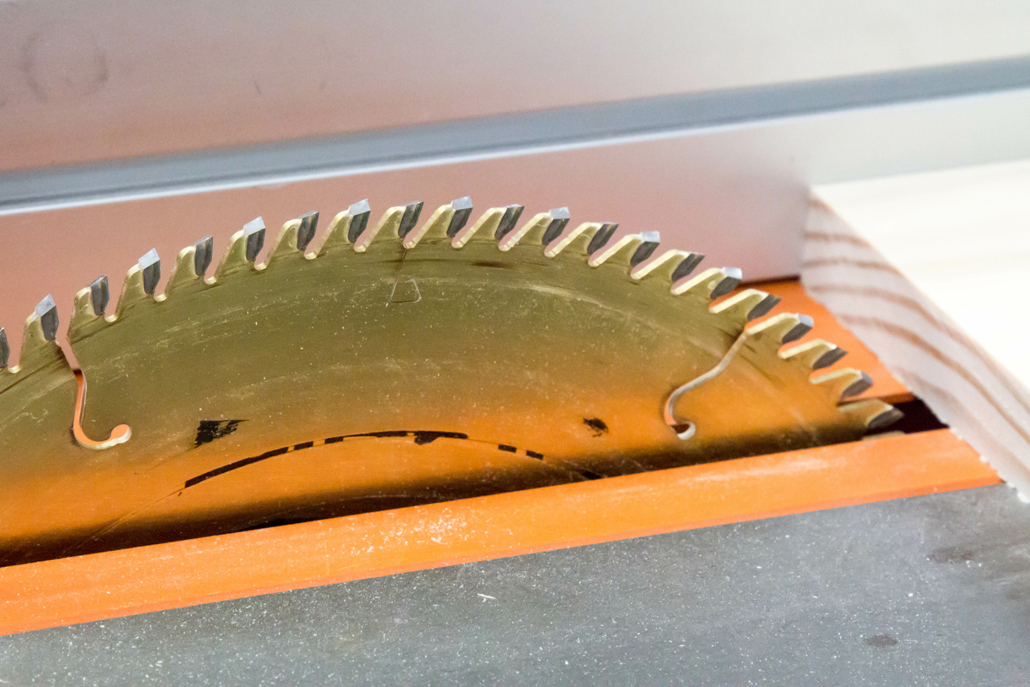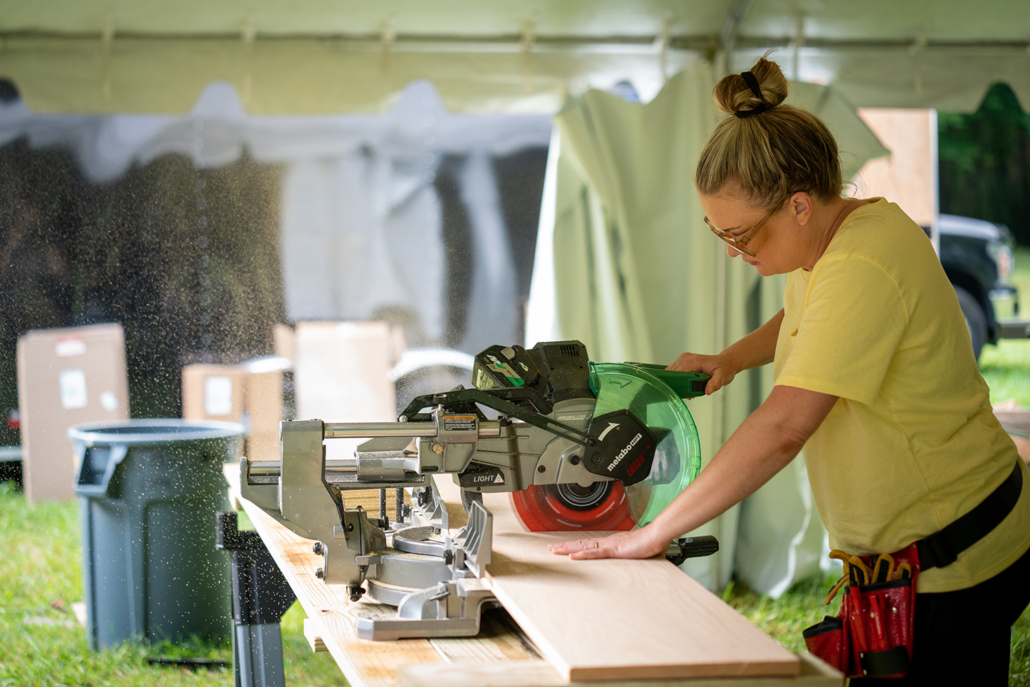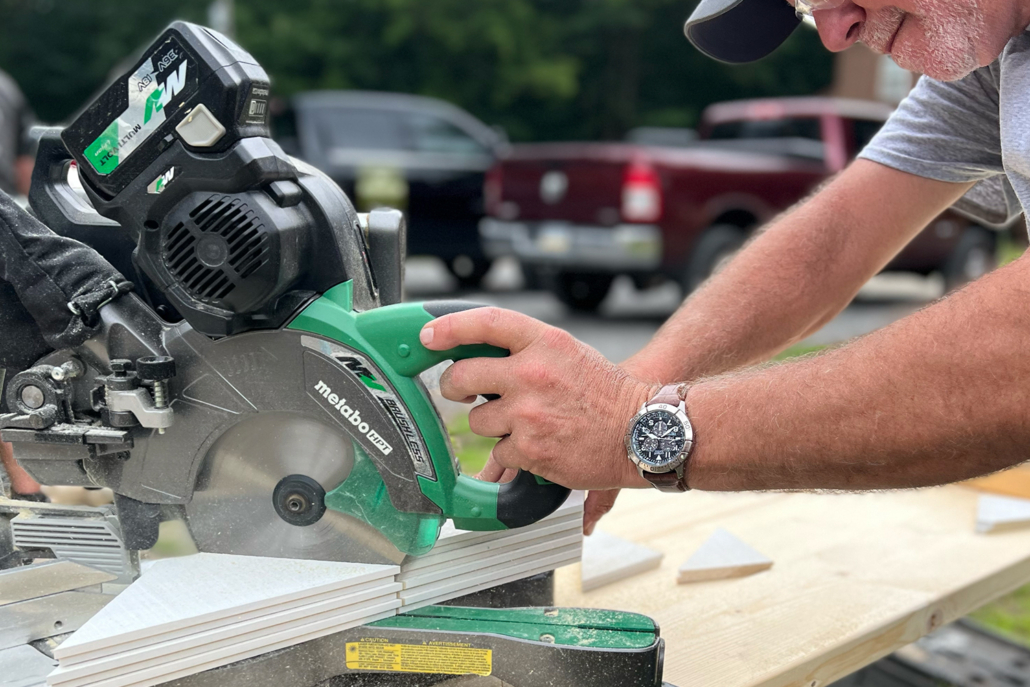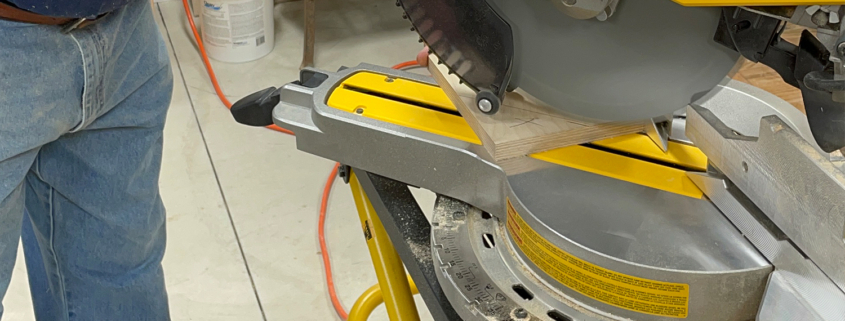Carpentry 101: Miter Saw vs. Table Saw – What Power Tool Do You Need?
There’s no way around it. You need to invest in some power tools if you’re planning a DIY renovation or project. But, when you’re not a professional woodworker, how do you even know what you need – especially when it comes to saws?
If you don’t have your own woodworking shop and are struggling to know whether you need a miter saw or table saw, let us help you out. Each one results in different types of cuts and, in many situations, one is better suited to a particular DIY woodworking task than the other.
Carpentry/Woodworking Project Tips From the Experts
Baird Brothers doesn’t just sell hardwood products – we use them in our own homes; we’ve been guiding homeowners and contractors for decades; we want to educate consumers and new customers. When it comes to a new build, remodel or woodworking DIY project, we have either done it ourselves or worked with someone who has!
If you’re a new DIYer who is looking to make the leap by investing in some power tools or you want to test your hand at an entry-level project, we’ve got you covered. Our helpful guides and tips are suitable for newbies and skilled tradesmen alike. Go ahead and dive in by watching a compilation of some bits of woodworking advice:
Saw Options Every DIYer Should Know About
In addition to the table saw and miter saw – which we will go in-depth on later in this blog – several other tools are worth knowing about when beefing up your DIY capabilities. When it comes to saws, in particular, be sure to look into the following pieces of equipment.
Circular Saw
An obvious staple for any woodworker, the circular saw is great for making quick crosscuts and rip cuts.
Jigsaw
This piece of handheld equipment is a must-have if you’re looking to cut curves.
Track Saw
A track saw is essentially a circular saw that runs along a track to deliver more precise straight cuts.
Bandsaw
A bandsaw is a large, floor-mounted piece of equipment that delivers a uniform cut and can be used to create irregular shapes.
Choosing the Type of Saw: Table Saw vs. Miter Saw
While there are several power saws you can invest in as you start to build your own woodworking shop (circular saw, table saw, miter saw, band saw, etc), today, we’re going to focus on two popular choices and the differences between them – miter saws and table saws.
Table Saw
Table saws have a circular saw blade that extends from a flat table. To use it, you slide work pieces across the surface of the tabletop, past the spinning blade. It’s best at cutting large pieces of wood (like plywood and S4S lumber), but it is a versatile option that can be used for both crosscuts and (more commonly) rips.

Table Saw Strengths
Table saws are great for making rip cuts through sheets of plywood and other large pieces of wood. The rip fence guides the workpiece while you cut through the board so you can get a straight cut. This makes a table saw great for cutting wide boards down to the size needed for your woodworking project.
This saw also allows you to make a bevel cut across the lumber. If you fit it with a dado blade, you can also cut dados, grooves, or rabbets. With the help of other table saw woodworking tools like a miter gauge and crosscut sled, you can make crosscuts and miters, too.
Table Saw Weaknesses
Table saws are large and hard to move from place to place due to their size. But, there are portable table saws available that are better suited for the jobsite.
It can also be difficult to make precise cuts with a table saw. While they’re good at handling large pieces and cutting through the entire length or width of boards, if you need to make very precise cuts for your woodworking project, a miter saw will likely be the tool you’re looking for.
While table saws are versatile, they also require a little more skill to get advanced cuts (like what you would get from a miter saw) – and they can be a little more dangerous. It’s important to address any power tool with caution and, in particular with table saws, to understand safety techniques to avoid kickback-related injuries.
Miter Saw
Miter saws also make use of a circular saw blade, but with this power tool, the blade is mounted on a pivoting arm that is brought down to cut the piece of wood. Depending on the type of miter saw, you can easily rotate, tilt, and direct the blade.

Types of Miter Saws (Yes, There Are Multiple)
Chop Saw
Some people refer to the basic chop saw as a miter saw. This tool, though, has a table that pivots and a blade that drops straight down. The piece being cut must be smaller than the blade’s diameter, and the angle of the saw stays at 90 degrees.
Sliding Miter Saw
A sliding miter saw allows the user to make wider cuts, because the arm can slide toward the user and be pushed back to make the crosscut. The arm can also swing at a 45-degree angle left or right to make a miter cut.
Compound Miter Saw
In addition to making straight and angled crosscuts, a compound miter allows you to make beveled and compound cuts (a combo of a bevel and miter cut). These types of saws come in both single-bevel and dual-bevel options. This saw, however, is limited in the width of the board that can be cut because the arm doesn’t slide forward.
Sliding Compound Miter Saw
If you’re looking for the crème de la crème of miter saws, then you’ll want the highly sought-after sliding compound miter saw. These are by far the most versatile options. As you might assume, this option includes the best of both worlds: a sliding arm to make wider cuts and the ability to make compound cuts.

Miter Saw Strengths
Depending on the type of miter saw, its ability to pivot and tilt allows for much more accurate crosscuts, miter cuts and bevel cuts. The precision of the angled cuts makes this tool ideal for working on delicate projects, such as picture frames and trim work (ex. crown molding, casing).
A miter saw is easier to operate (and safer) than a table saw when cutting angles – though you still have to use caution. Since it is also lighter, it’s much easier to transport to and from the jobsite.
Miter Saw Weaknesses
As mentioned above, miter saws aren’t designed to make longer cuts. So, if your DIY project requires both beveled and rip cuts, it’s likely that you will need two pieces of equipment.
Which Saw Is Best For You?
Really – it’s best to have both! But, if you’re looking to commit to only one saw for now, it’s going to depend on your carpentry goals.
If you have a greater need to cut boards to size and build larger projects, you may want to go with a table saw. (Sawstop Saws makes some great table saws, if you haven’t already heard about them.) If you’re working on smaller, more precise projects, then the miter saw should be your first investment. (Dewalt and Metabo HPT miter saws are some of the best.)
Great Builds Start With Baird
Miter saw vs. table saw, table saw vs. miter saw – when it comes to woodworking, no matter what saw you choose, you’re going to need quality lumber to make a quality product. But, never fear. Baird Brothers has you covered. Shop our wide selection of lumber, plywood and mouldings online or simply get in touch with us and we’ll get you set up with the products needed to start building!



